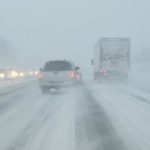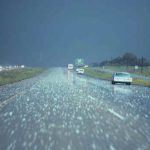Instructions:
Record the appropriate code for weather conditions at the time of the crash.
Definition:
The prevailing atmospheric conditions that existed at the time of the crash.
Rationale:
Important for management/administration and evaluation. Critical for prevention programs and engineering evaluations.
FAQ
If no other Weather Condition is applicable, what is the appropriate entry for the secondary field?
If only one Weather Condition applies, leave the second field empty.
Accuracy Checks
- If the value of Weather Condition is ‘rain’, ‘snow’, ‘sleet’, ‘hail’, or ‘freezing rain’, then Road Surface Condition cannot be ‘dry’. Note: This may not apply in unusual locations, such as a tunnel.
- If the crash occurred between May and September, the value of Road Surface Condition should not be ‘snow’, ‘ice’, or ‘slush’.
- If the value for Weather Conditions is ‘clear’, Road Contributing Circumstances should not be ‘road surface condition (wet, icy, snow, slush, etc.)’.
Other Related Fields
Data Quality Audit Results
| Report Type | Acceptable | Inconsistent | Invalid | Empty | ||||
| Local Police (electronic) | 336 | 94.6% | 12 | 3.4% | 2 | 0.6% | 5 | 1.4% |
| Local Police (paper) | 340 | 94.2% | 16 | 4.4% | – | – | 5 | 1.4% |
| State Police (electronic) | 306 | 91.6% | 1 | 0.3% | – | – | 27 | 8.1% |
| Total | 982 | 93.5% | 29 | 2.8% | 2 | 0.2% | 37 | 3.5% |
Of the reports audited, Weather Conditions was completed in an acceptable manner 93 percent of the time. As shown here, State Police had a slightly higher incidence of leaving the field empty than local Police but had a lower incidence of inconsistencies between this field and other fields on the crash report. Auditors commented that officers often completed the second weather field with either the same entry as the first weather condition code, or marked it unknown. With no significant difference between paper and electronically submitted reports, this does not appear to be a systems issue.







